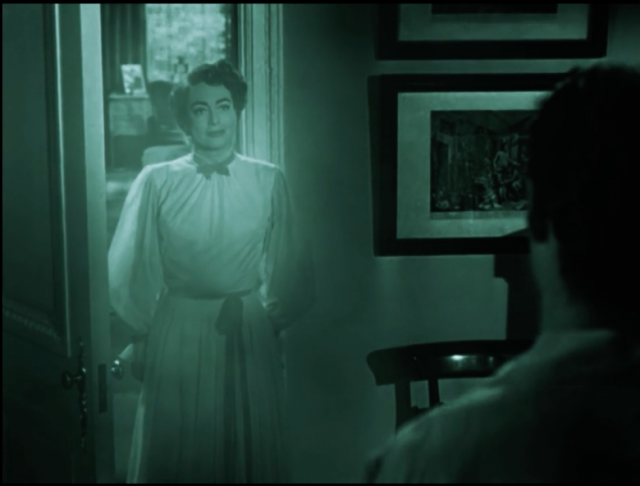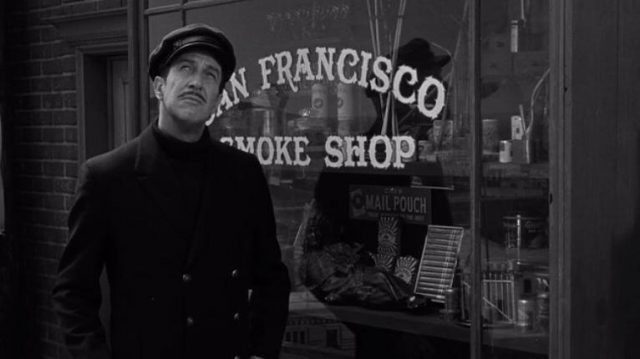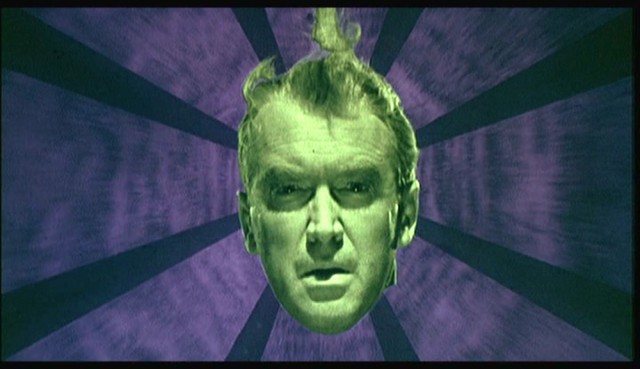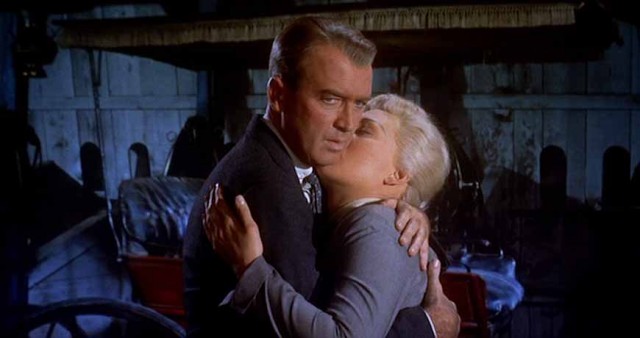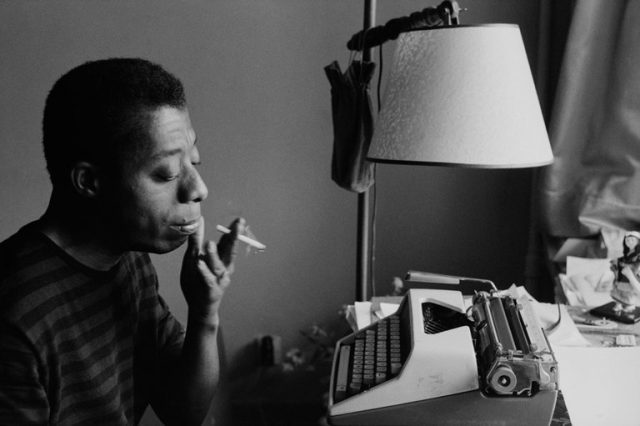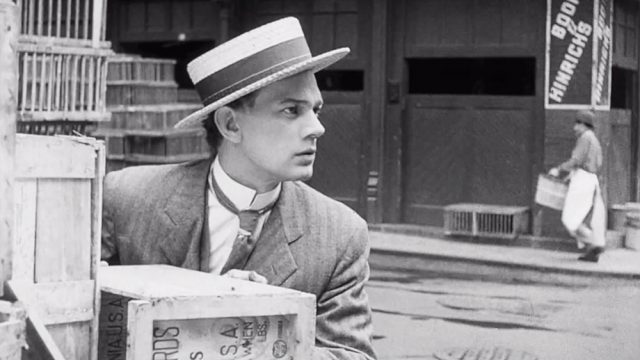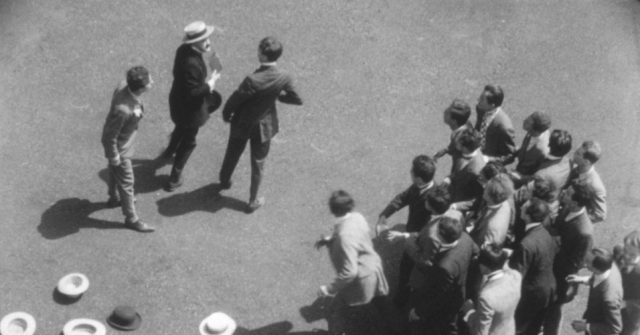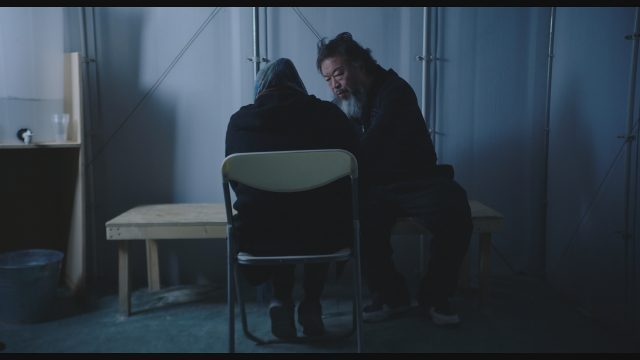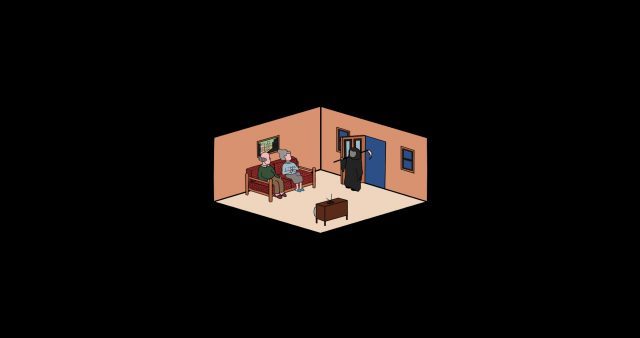
Alien is one of nineteen films in the Quad series “The Way I See It: Directors’ Cuts”
Quad Cinema
34 West 13th St. between Fifth & Sixth Aves.
January 5-18
212-255-2243
quadcinema.com
You might think that you’ve seen certain films, but you have not necessarily experienced them the way their directors intended you to. For reasons such as money, running time, deadlines, and creative differences with producers, not all films completely represent an auteur’s artistic vision. The Quad pays respect to those wishes with “The Way I See It: Directors’ Cuts,” a two-week series featuring nineteen films in which the director went back and made additions and deletions after the initial theatrical release. Of course, it doesn’t mean the movie is now better, but it is no longer exactly the same. Among the revised works the Quad is showing are Steven Spielberg’s Close Encounters of the Third Kind, Miloš Forman’s Amadeus, Ridley Scott’s Blade Runner: The Final Cut and Alien, Francis Ford Coppola’s Apocalypse Now Redux, Terry Gilliam’s Brazil, and Sergio Leone’s Once Upon a Time in America. It’s best to just settle in and watch these special editions as they are, without desperately trying to figure out what is new and what has been cut; you can always check that out later on the internet.
THE LAST PICTURE SHOW (Peter Bogdanovich, 1971)
Quad Cinema
January 8-18
quadcinema.com
 Peter Bogdanovich’s The Last Picture Show is a tender-hearted, poignant portrait of sexual awakening and coming-of-age in a sleepy Texas town. Adapted from the Larry McMurtry novel by the author and the director, the film is set in the early 1950s, focusing on Sonny Crawford (Timothy Bottoms), a teenager who works at the local pool hall with Billy (Timothy’s brother Sam), a simple-minded boy who needs special caring. Sonny’s best friend, Duane Jackson (Oscar-nominated Jeff Bridges), is dating the prettiest girl in school, Jacy Farrow (Cybill Shepherd, in her film debut), who is getting ready to test out the sexual waters, sneaking away on a date with Lester Marlow (Randy Quaid), who takes her to a naked-swimming party in a wealthier suburb of Wichita Falls. Meanwhile, Sonny breaks up with his girlfriend, Charlene Druggs (Sharon Taggart), and becomes drawn to the sad, unhappy Ruth Popper (an Oscar-winning Cloris Leachman), the wife of his football coach (Bill Thurman). The outstanding all-star cast also features Oscar-nominated Ellen Burstyn as Lois, Jacy’s mother; Eileen Brennan as a waitress in the local diner who makes cheeseburgers for Sonny; Clu Gulager as a working man who has a thing for Lois; Frank Marshall, who went on to become a big-time producer, as high school student Tommy Logan; and Oscar winner Ben Johnson as Sam the Lion, the moral center of the town and owner of the pool hall, diner, and movie theater, which shows such films as Father of the Bride and Red River.
Peter Bogdanovich’s The Last Picture Show is a tender-hearted, poignant portrait of sexual awakening and coming-of-age in a sleepy Texas town. Adapted from the Larry McMurtry novel by the author and the director, the film is set in the early 1950s, focusing on Sonny Crawford (Timothy Bottoms), a teenager who works at the local pool hall with Billy (Timothy’s brother Sam), a simple-minded boy who needs special caring. Sonny’s best friend, Duane Jackson (Oscar-nominated Jeff Bridges), is dating the prettiest girl in school, Jacy Farrow (Cybill Shepherd, in her film debut), who is getting ready to test out the sexual waters, sneaking away on a date with Lester Marlow (Randy Quaid), who takes her to a naked-swimming party in a wealthier suburb of Wichita Falls. Meanwhile, Sonny breaks up with his girlfriend, Charlene Druggs (Sharon Taggart), and becomes drawn to the sad, unhappy Ruth Popper (an Oscar-winning Cloris Leachman), the wife of his football coach (Bill Thurman). The outstanding all-star cast also features Oscar-nominated Ellen Burstyn as Lois, Jacy’s mother; Eileen Brennan as a waitress in the local diner who makes cheeseburgers for Sonny; Clu Gulager as a working man who has a thing for Lois; Frank Marshall, who went on to become a big-time producer, as high school student Tommy Logan; and Oscar winner Ben Johnson as Sam the Lion, the moral center of the town and owner of the pool hall, diner, and movie theater, which shows such films as Father of the Bride and Red River.
Cinematographer Robert Surtees shoots The Last Picture Show in a sentimental black-and-white that gives the film an old-fashioned feel, as if it’s a part of Americana that is fading away. Bogdanovich also chose to have no original score, instead populating the tale with country songs by Hank Williams, Bob Wills and the Texas Playboys, Lefty Frizzell, Tony Bennett, and others singing tales of woe. In many ways the film, nominated for eight Oscars including Best Picture and Best Director, is the flip side of George Lucas’s 1973 hit American Graffiti, which is set ten years later but looks like it’s from another century; it also has a lot in common with François Truffaut’s 1962 classic Jules and Jim.
HEAVEN’S GATE (Michael Cimino, 1980)
Quad Cinema
January 11-15
quadcinema.com
 When I was a kid in school, one of the first movies I ever reviewed was Heaven’s Gate, Michael Cimino’s brazenly overbudget famous Hollywood disaster. Incensed that professional film critics were obsessed with the meta surrounding the making of the epic Western instead of simply taking it for what it was, I was determined to treat it like any other movie, forgetting about all the behind-the-scenes gossip and tales of financial gluttony. And what I found back then was that it was a noble failure, a bold exercise in genre that had its share of strong moments but ultimately fell apart, leaving me dissatisfied and disappointed but glad I had seen it; I did not want my three-plus hours back. In fact, I probably would have checked out the rumored five-hour version if it had been shown, hoping it would fill in the many gaps that plagued the official theatrical release. More than thirty years later, Cimino’s follow-up to his Oscar-winning sophomore effort, The Deer Hunter, has returned in a 219-minute digital restoration supervised by Cimino, and it does indeed shed new light on the unfairly ridiculed work, which is still, after all this time, a noble failure. Inspired by the 1882 Johnson County War in Wyoming, the film stars Kris Kristofferson as Jim Averill, a Harvard-educated lawman hired by a group of immigrants, called “citizens,” whose livelihood — and lives — are being threatened by a wealthy cattlemen’s association run by the elitist Frank Canton (Sam Waterston). The association has come up with a kill list of 125 citizens, offering fifty dollars for each murder, a plan that has been authorized all the way up to the president of the United States. Leading the way for the cattlemen is hired killer Nate Champion (Christopher Walken), who has a particularly fierce aversion to the foreign-speaking immigrants. With a major battle on the horizon, Averill and Champion also fight for the love of the same woman, the luminous Ella Watson (Isabelle Huppert), a successful madam who soon finds herself in the middle of the controversy.
When I was a kid in school, one of the first movies I ever reviewed was Heaven’s Gate, Michael Cimino’s brazenly overbudget famous Hollywood disaster. Incensed that professional film critics were obsessed with the meta surrounding the making of the epic Western instead of simply taking it for what it was, I was determined to treat it like any other movie, forgetting about all the behind-the-scenes gossip and tales of financial gluttony. And what I found back then was that it was a noble failure, a bold exercise in genre that had its share of strong moments but ultimately fell apart, leaving me dissatisfied and disappointed but glad I had seen it; I did not want my three-plus hours back. In fact, I probably would have checked out the rumored five-hour version if it had been shown, hoping it would fill in the many gaps that plagued the official theatrical release. More than thirty years later, Cimino’s follow-up to his Oscar-winning sophomore effort, The Deer Hunter, has returned in a 219-minute digital restoration supervised by Cimino, and it does indeed shed new light on the unfairly ridiculed work, which is still, after all this time, a noble failure. Inspired by the 1882 Johnson County War in Wyoming, the film stars Kris Kristofferson as Jim Averill, a Harvard-educated lawman hired by a group of immigrants, called “citizens,” whose livelihood — and lives — are being threatened by a wealthy cattlemen’s association run by the elitist Frank Canton (Sam Waterston). The association has come up with a kill list of 125 citizens, offering fifty dollars for each murder, a plan that has been authorized all the way up to the president of the United States. Leading the way for the cattlemen is hired killer Nate Champion (Christopher Walken), who has a particularly fierce aversion to the foreign-speaking immigrants. With a major battle on the horizon, Averill and Champion also fight for the love of the same woman, the luminous Ella Watson (Isabelle Huppert), a successful madam who soon finds herself in the middle of the controversy.
Heaven’s Gate is beautifully photographed by Vilmos Zsigmond, the first half bathed in sepia tones, with many shots evoking Impressionist painting. The narrative, which begins in Harvard in 1870 before jumping to 1890 Wyoming, moves far too slowly, with underdeveloped relationships and characters that don’t pay off in the long run, especially John Hurt as Billy Irvine, who wanders around lost throughout the film. Using a gentle rendition of Strauss’s “The Blue Danube” as a musical motif, Cimino creates repetitive scenes that start too early and go on too long, choosing style over substance, resulting in too much atmosphere and not enough motivation. The all-star cast also includes Joseph Cotten, Jeff Bridges, Brad Dourif, Richard Masur, Eastwood regular Geoffrey Lewis, Terry O’Quinn, Tom Noonan, and Mickey Rourke, but most of them are wasted in minor roles that are never fully developed. Whereas the film began by calling to mind such works as Akira Kurosawa’s Yojimbo, John Ford’s My Darling Clementine, and Robert Altman’s McCabe & Mrs. Miller, it devolves into Sam Peckinpah-lite as rape and violence take center stage, along with silly plot twists and clichéd dialogue, much of which is hard to make out. However, all of that does not add up to one of the worst movies ever made, despite its inclusion on many such lists. It even feels oddly relevant today, as America continues to debate immigration laws. But in the end it’s just a film that tried too hard, focusing on the wrong things. Back in 1980, I wanted to see the supposed five-hour version; now I think I’d prefer to see a two-hour Heaven’s Gate that would just get right to the point.
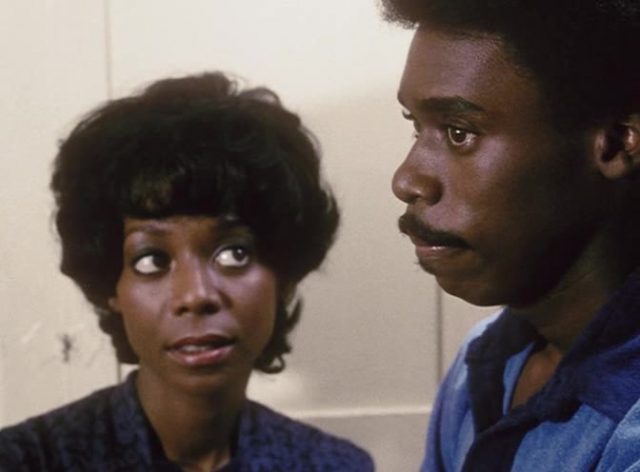
In 2007, Charles Burnett released a directors cut of his 1983 film, My Brother’s Wedding
MY BROTHER’S WEDDING (Charles Burnett, 1983)
Quad Cinema
January 13-16
quadcinema.com
 Following the breakout success of the 2006 release of Charles Burnett’s remarkable Killer of Sheep (1977), the following year Milestone Films released a restored and digitally reedited version of Burnett’s poignant 1983 drama, My Brother’s Wedding. Everett Silas stars as Pierce Mundy, a ne’er-do-well slacker who loafs around in his parents’ dry-cleaning store, waits for his best friend, the smooth-talking Soldier (Ronnie Bell), to get out of jail, and resents that his brother, Wendell (Dennis Kemper), has become a successful lawyer and is preparing to marry the snobby Sonia (Gaye Shannon-Burnett, the director’s real-life wife). As he did with Killer of Sheep, Burnett, who was born in Vicksburg, Mississippi, and raised in Watts, sets the film in Watts, where poor black families struggle to make a go of it in the shadow of ritzy Los Angeles. Although Pierce never seems to make the right decision, his choices are limited, but that doesn’t stop Burnett (To Sleep with Anger), who will be receiving an honorary Oscar this year, from coming up with some very droll, funny scenes. Shot in color (Killer of Sheep was made in black-and-white), My Brother’s Wedding is another no-budget treasure from a vital director who is vastly underrecognized.
Following the breakout success of the 2006 release of Charles Burnett’s remarkable Killer of Sheep (1977), the following year Milestone Films released a restored and digitally reedited version of Burnett’s poignant 1983 drama, My Brother’s Wedding. Everett Silas stars as Pierce Mundy, a ne’er-do-well slacker who loafs around in his parents’ dry-cleaning store, waits for his best friend, the smooth-talking Soldier (Ronnie Bell), to get out of jail, and resents that his brother, Wendell (Dennis Kemper), has become a successful lawyer and is preparing to marry the snobby Sonia (Gaye Shannon-Burnett, the director’s real-life wife). As he did with Killer of Sheep, Burnett, who was born in Vicksburg, Mississippi, and raised in Watts, sets the film in Watts, where poor black families struggle to make a go of it in the shadow of ritzy Los Angeles. Although Pierce never seems to make the right decision, his choices are limited, but that doesn’t stop Burnett (To Sleep with Anger), who will be receiving an honorary Oscar this year, from coming up with some very droll, funny scenes. Shot in color (Killer of Sheep was made in black-and-white), My Brother’s Wedding is another no-budget treasure from a vital director who is vastly underrecognized.
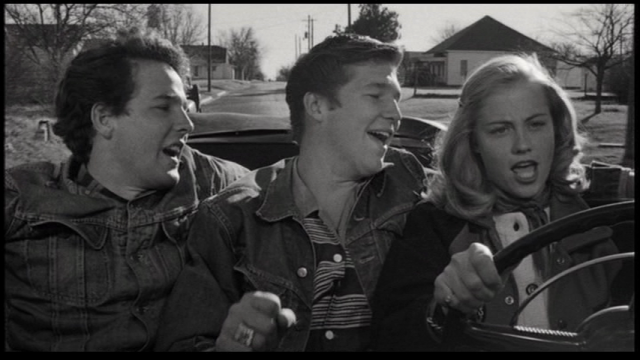

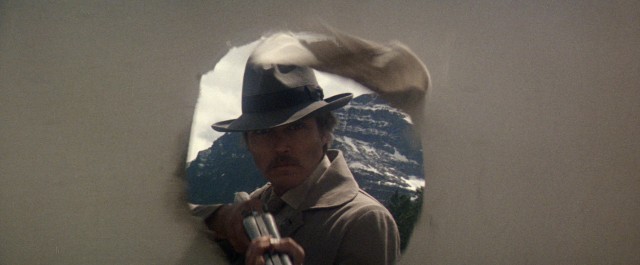
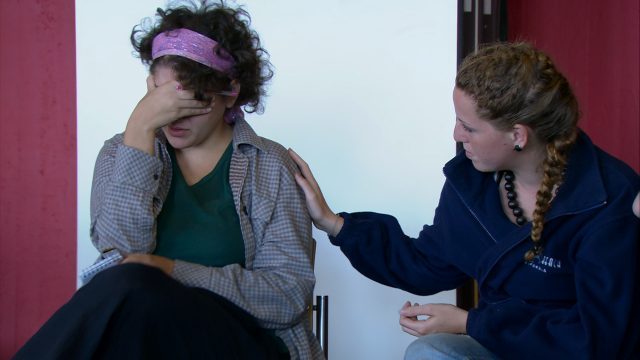
 Hava Kohav Beller’s documentary In the Land of Pomegranates begins with an epigraph quote from Swiss writer and political activist Friedrich Dürrenmatt: “This inhuman world has to become more human. But how?” The writer of The Pledge and The Visit also claimed, “Without tolerance, our world turns into hell,” and argued that Swiss citizens were both prisoners and guards. One wonders what Dürrenmatt would have thought of Beller’s film, which explores the ongoing battle between Jews and Palestinians over who has the right to exist in Israel. The two-hour film starts out slowly, with interviews dating back to 2010 as random men and women share their views on the fierce debate; they are not artists, politicians, public figures, acknowledged experts, or professional thinkers. Ofra Eviatar talks about the dangers of being a Jew living by the wall at the Gaza border. An Arab man explains that he felt scared when he was a child, so “my fear meant I would get revenge when I grew up.” The people chosen feel a bit too arbitrary, too selective and manipulative. But then, suddenly, the film finds its focus as it zeroes in on a gathering of young Palestinians and Jews participating in a retreat in Germany called “Vacation from War,” where they live together and have intense group discussions about the controversy surrounding the State of Israel. “Here we are having a break from reality and here we will try to see if we can understand each other,” facilitator Shadi Hanoun says. But just when it seems like the next generation might be able to find some common ground, the conversation gets brutal as the Jews ask whether the Palestinians will ever accept Israel’s right to exist and the Palestinians demand that their land must be returned to them. Meanwhile, a young Palestinian mother has to cross the border to bring her son, who has a severe heart problem, to an Israeli hospital where Jewish doctors try to save the boy.
Hava Kohav Beller’s documentary In the Land of Pomegranates begins with an epigraph quote from Swiss writer and political activist Friedrich Dürrenmatt: “This inhuman world has to become more human. But how?” The writer of The Pledge and The Visit also claimed, “Without tolerance, our world turns into hell,” and argued that Swiss citizens were both prisoners and guards. One wonders what Dürrenmatt would have thought of Beller’s film, which explores the ongoing battle between Jews and Palestinians over who has the right to exist in Israel. The two-hour film starts out slowly, with interviews dating back to 2010 as random men and women share their views on the fierce debate; they are not artists, politicians, public figures, acknowledged experts, or professional thinkers. Ofra Eviatar talks about the dangers of being a Jew living by the wall at the Gaza border. An Arab man explains that he felt scared when he was a child, so “my fear meant I would get revenge when I grew up.” The people chosen feel a bit too arbitrary, too selective and manipulative. But then, suddenly, the film finds its focus as it zeroes in on a gathering of young Palestinians and Jews participating in a retreat in Germany called “Vacation from War,” where they live together and have intense group discussions about the controversy surrounding the State of Israel. “Here we are having a break from reality and here we will try to see if we can understand each other,” facilitator Shadi Hanoun says. But just when it seems like the next generation might be able to find some common ground, the conversation gets brutal as the Jews ask whether the Palestinians will ever accept Israel’s right to exist and the Palestinians demand that their land must be returned to them. Meanwhile, a young Palestinian mother has to cross the border to bring her son, who has a severe heart problem, to an Israeli hospital where Jewish doctors try to save the boy.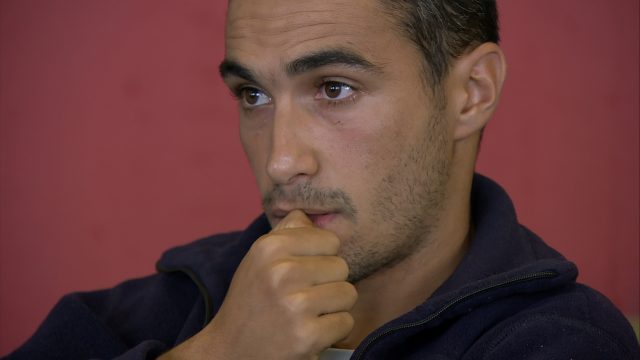
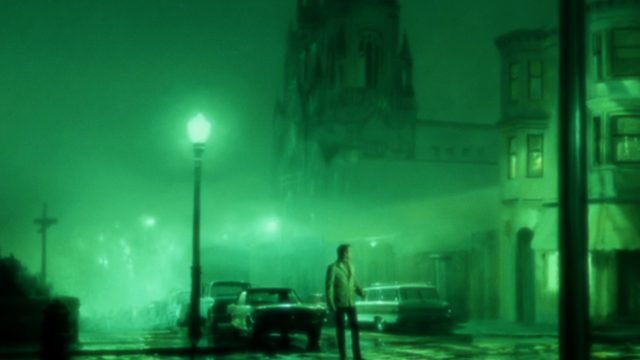
 Winnipeg-based filmmakers Guy Maddin, Evan Johnson, and Galen Johnson ingeniously reimagine Alfred Hitchcock’s psychosexual masterpiece, Vertigo, using clips from dozens of movies and television shows in the mesmerizing pastiche The Green Fog. When Maddin, who has made such previous films as Careful, The Saddest Music in the World, and
Winnipeg-based filmmakers Guy Maddin, Evan Johnson, and Galen Johnson ingeniously reimagine Alfred Hitchcock’s psychosexual masterpiece, Vertigo, using clips from dozens of movies and television shows in the mesmerizing pastiche The Green Fog. When Maddin, who has made such previous films as Careful, The Saddest Music in the World, and 